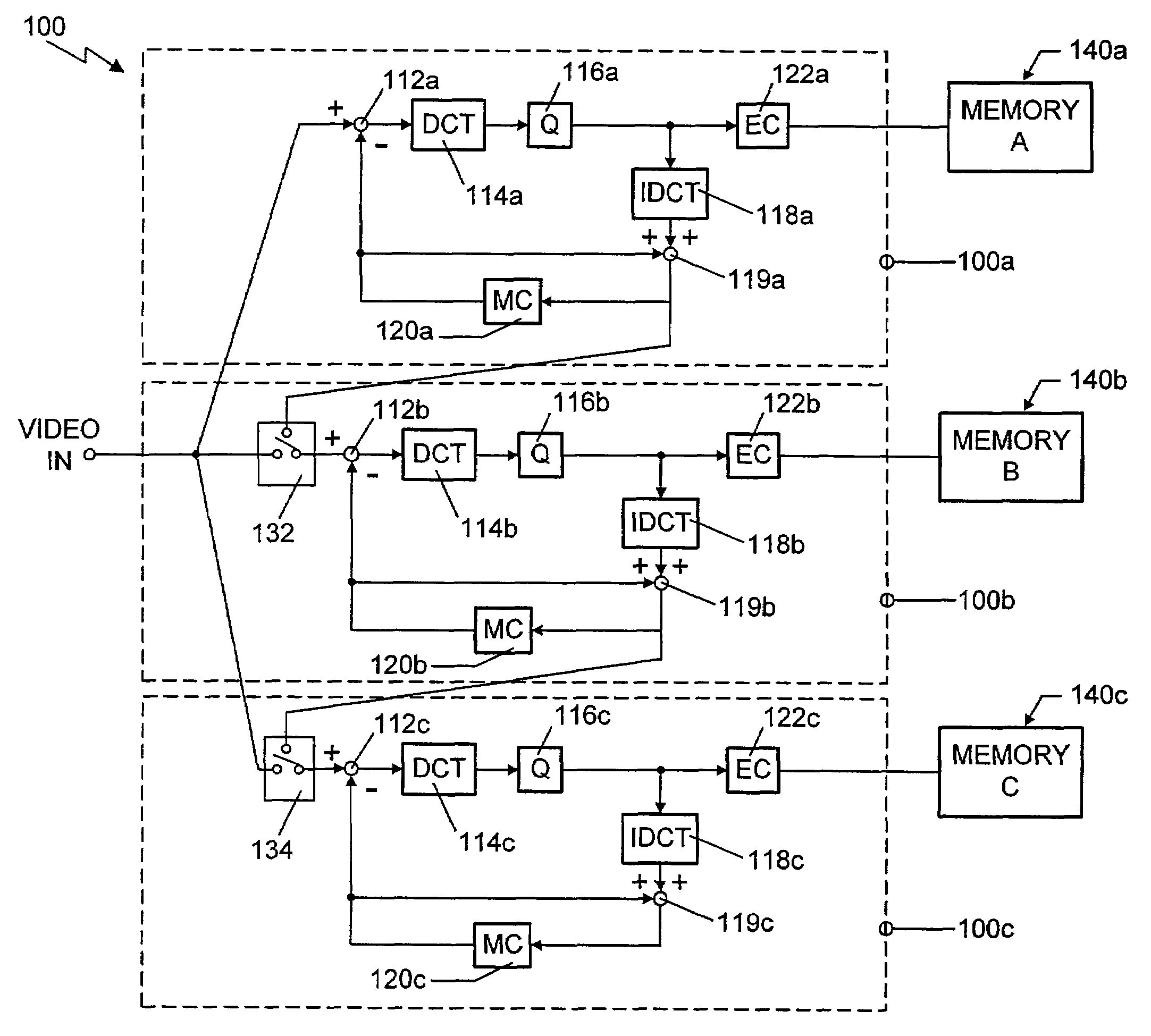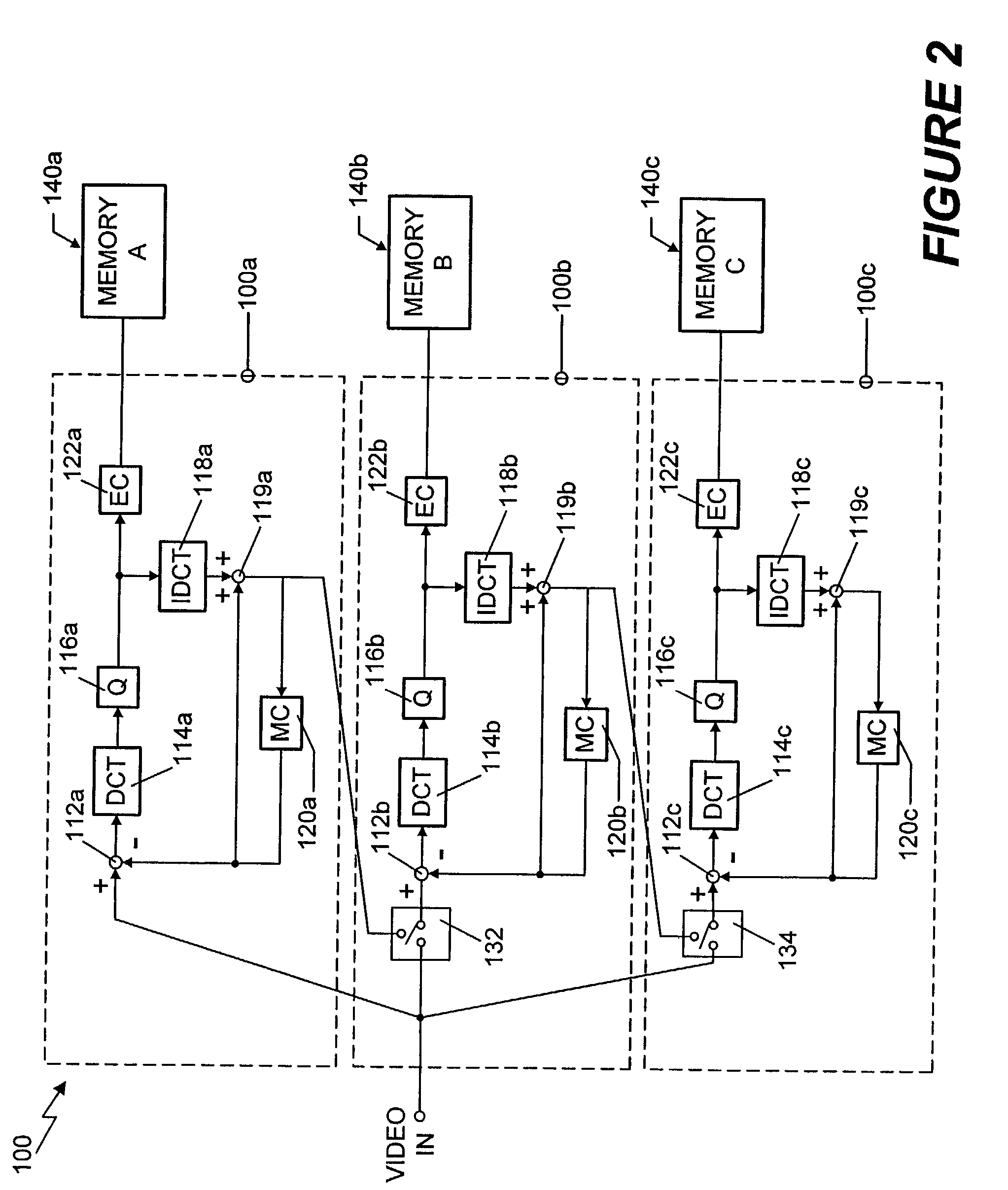Method and apparatus for providing scalable pre-compressed digital video with reduced quantization based artifacts
a digital video and quantization technology, applied in the field of pre-compressed, stored video, can solve the problems of annoying artifacts, error propagating temporally over several frames, and omitted elements not relevant to understanding their operation
- Summary
- Abstract
- Description
- Claims
- Application Information
AI Technical Summary
Benefits of technology
Problems solved by technology
Method used
Image
Examples
Embodiment Construction
[0042]An interframe coding apparatus 100 according to the present invention is shown schematically in FIG. 2. The coding apparatus 100 contains three embedded coders 100a, 100b and 100c, each of which supplies data at a different bit rate. It will be recognized by those skilled in the art that the coding apparatus 100 may consist of any plural number of embedded coders, so as to allow the support of any desired number of different bit rates. It will also be understood that the coders 100a, 100b, 100c may be any type of interframe coder, and still make use of the inventive principles described herein. The preferred embodiment for each of the embedded coders 100a, 100b, 100c, however, are of essentially the same structure as the prior art coder of FIG. 1. Some of the more important details of the coders are discussed briefly above in conjunction with FIG. 1.
[0043]The coding apparatus 100 of FIG. 2 is arranged to allow the coding and storage of the same video signal at a variety of dif...
PUM
 Login to View More
Login to View More Abstract
Description
Claims
Application Information
 Login to View More
Login to View More - R&D
- Intellectual Property
- Life Sciences
- Materials
- Tech Scout
- Unparalleled Data Quality
- Higher Quality Content
- 60% Fewer Hallucinations
Browse by: Latest US Patents, China's latest patents, Technical Efficacy Thesaurus, Application Domain, Technology Topic, Popular Technical Reports.
© 2025 PatSnap. All rights reserved.Legal|Privacy policy|Modern Slavery Act Transparency Statement|Sitemap|About US| Contact US: help@patsnap.com



